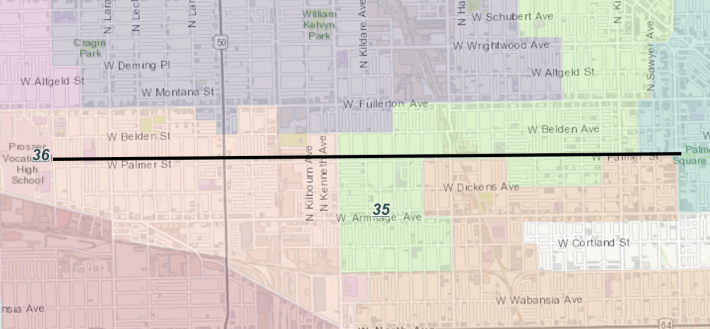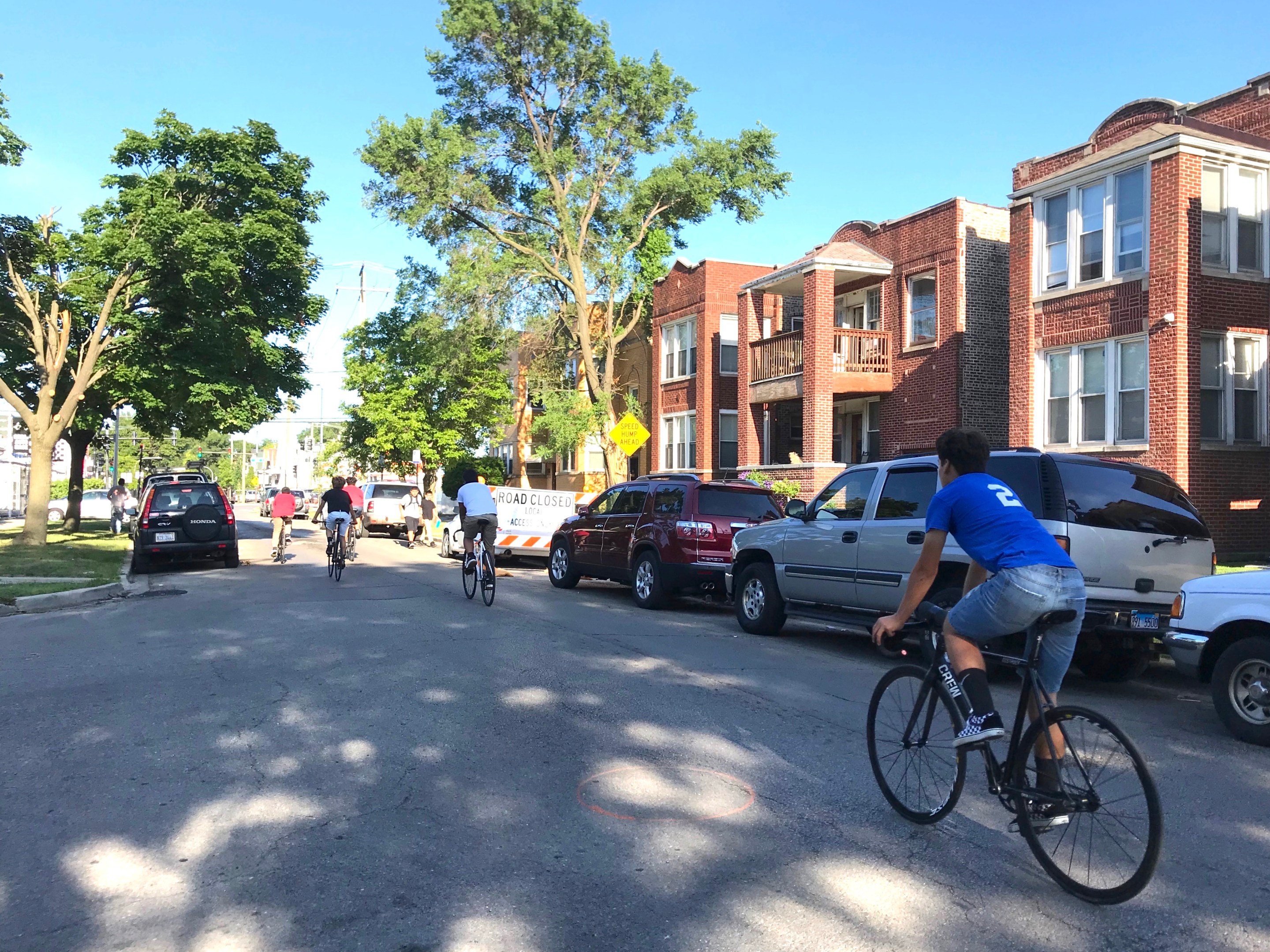Need more evidence of why Chicago's heavily gerrymandered ward boundaries and the aldermanic prerogative system is a total pain in the neck when comes to transportation infrastructure? Look no further than the Palmer Slow Street proposal, a very simple plan to create a safe corridor for socially-distanced transportation and recreation, on a very politically complex corridor.
On her first day in office in May 2019, Mayor Lori Lightfoot signed an executive order supposedly banning aldermanic prerogative, the de-facto system of allowing City Council reps to veto projects in their wards. However, several months after that, the Chicago Department of Transportation acknowledged that they still hadn't changed their protocols. If an alderman doesn't want a bus lane, curb extension, or bikeway in their ward, it's still probably not going to get built.
The Palmer Slow Street (the city calls it a "Shared Street") is sort of a perfect storm of that conundrum. CDOT has been creating Slow Streets -- corridors where through traffic is banned and traffic is calmed with barricades and safety barrels -- across the city, so that residents can safely walk, roll, jog, and bike in the roadway. The treatment involves minimal inconvenience for drivers, who can still park, make deliveries, and do pickups and drop-offs on the street.
To save on red tape, in many cases CDOT has planned Slow Streets so that the corridor lies within a single ward. But in the case of the Palmer Slow Street, which was to run between Long Avenue in Belmont Cragin and Kedzie Avenue in Logan Square, the less-than-three-mile stretch passes through four different wards. These include the 36th (Alderman Gilbert Villegas), the 35th (Alderman Carlos Ramirez-Rosa), the 26th (Alderman Roberto Maldonado), and the 32nd (Alderman Scott Waguespack.)

Villegas apparently gave his approval long ago, because the stretch of Palmer between Long and Cicero Avenue, all in his ward, was installed weeks ago. It appears to be getting good use from cyclists, including the area's many fixed-gear bike-riding youth.
Update: After the publication of this article, Villegas tweeted the following:
I actually conducted an email and robocall poll to determine if this was something my community wanted. They were supportive and we will try it out this year to work our any kinks.
— Gilbert Villegas (@gilbert36ward) July 24, 2020
Rosa took a more cautious approach, doing an in-depth public input process that involved notifying Palmer residents with fliers, holding an online survey, and hosting an online community meeting on the project. He argued that this was necessary because the corridor is heavily Latino, and was hard-hit by COVID, a not-unreasonable point of view. But ultimately 67.6 percent percent of the residents who provided input, including 81.2 percent of those who live on Palmer, voted in favor of the project, so Rosa signed off on it, citing the "overwhelming support." He had expected that Palmer would be completed in early-to-mid July.
Waguespack signed off on the project as well. "We told CDOT we were OK with our small segment of Palmer," said the alderman's chief of staff Paul Sajovec.
Maldonado's office didn't respond to requests for an update. But yesterday Rosa told me yesterday Maldonado put the kybosh on the project on the two short stretches within the 26th Ward, from Karlov to Hamlin avenues, and between St. Louis and Kedzie avenues. Rosa said he wasn't sure why Maldonado was opposed to the project, except that Maldonado has said he would ask his constituents for feedback.
The exclusion of the Karlov-to-Hamlin segment, which straddles Pulaski Road, doesn't make a big difference, since the Palmer Slow Street plans already excluded a few blocks around the Pulaski Industrial Corridor. That's due to concerns from business owners about the drivers of large trucks sharing the street with cyclists and pedestrians. But it's annoying that the easternmost few blocks in bike-friendly Logan Square will also be omitted for no obvious reason.
The good news is that Rosa has already asked CDOT to go ahead and install the rest of the Palmer Slow Street without the stretches in Maldonado's ward, so presumably it will be rolled out soon. CDOT didn't immediately respond to a request for an update.
But again, Palmer is a great example of how weird ward boundaries, along with the problematic aldermanic prerogative system, are a roadblock to getting good transportation projects done.





